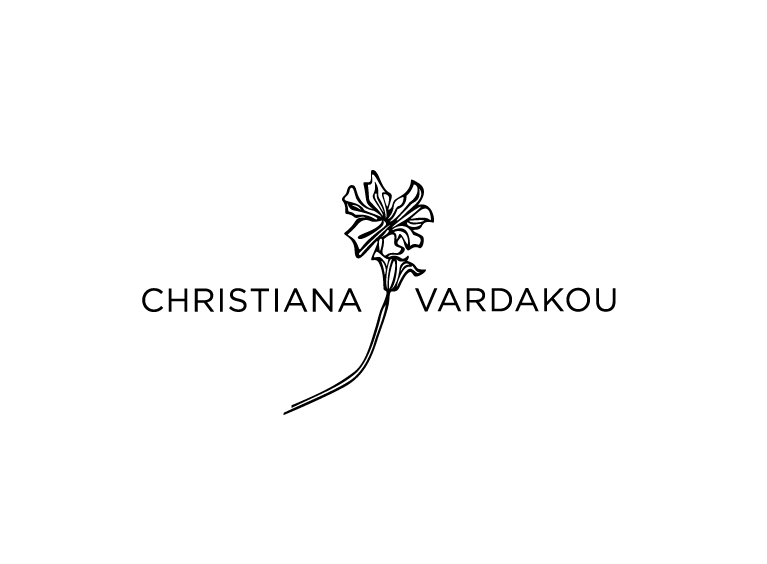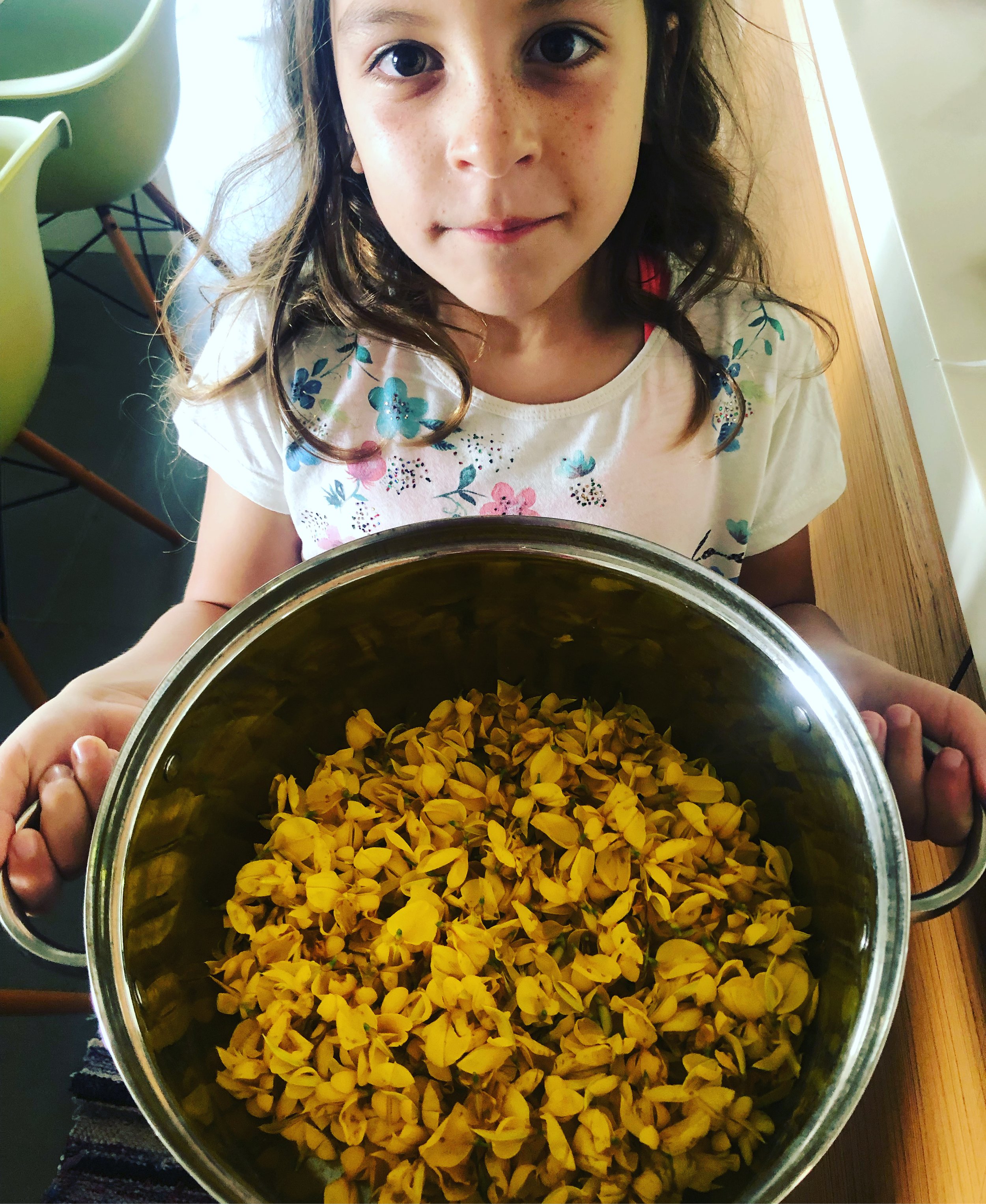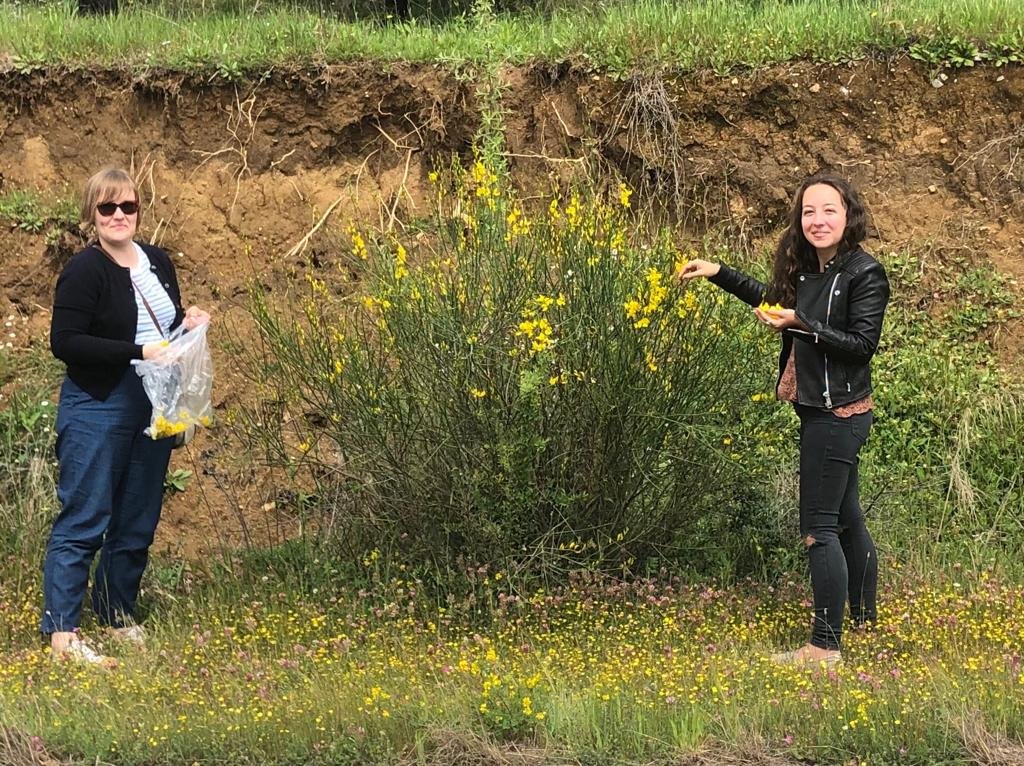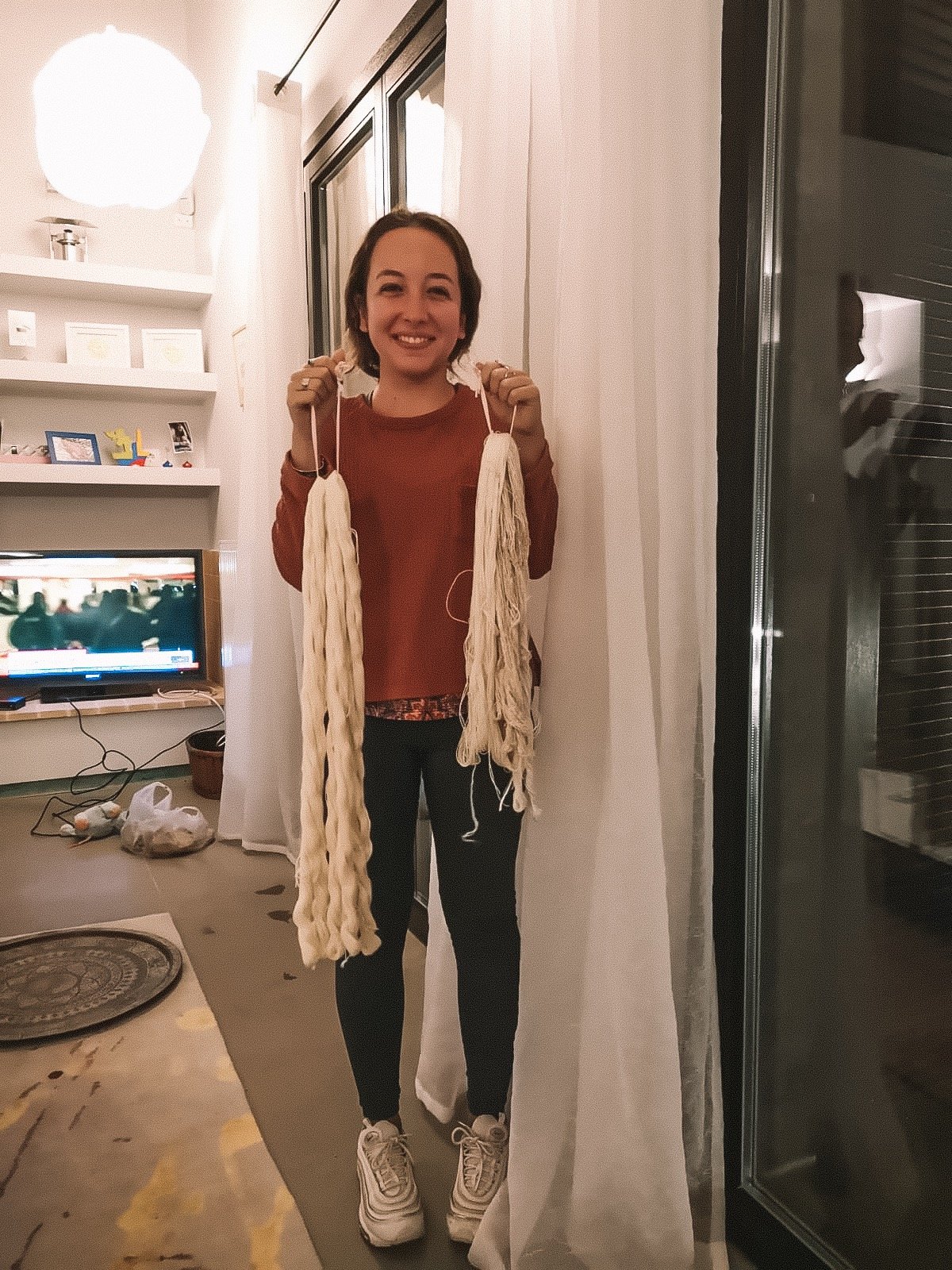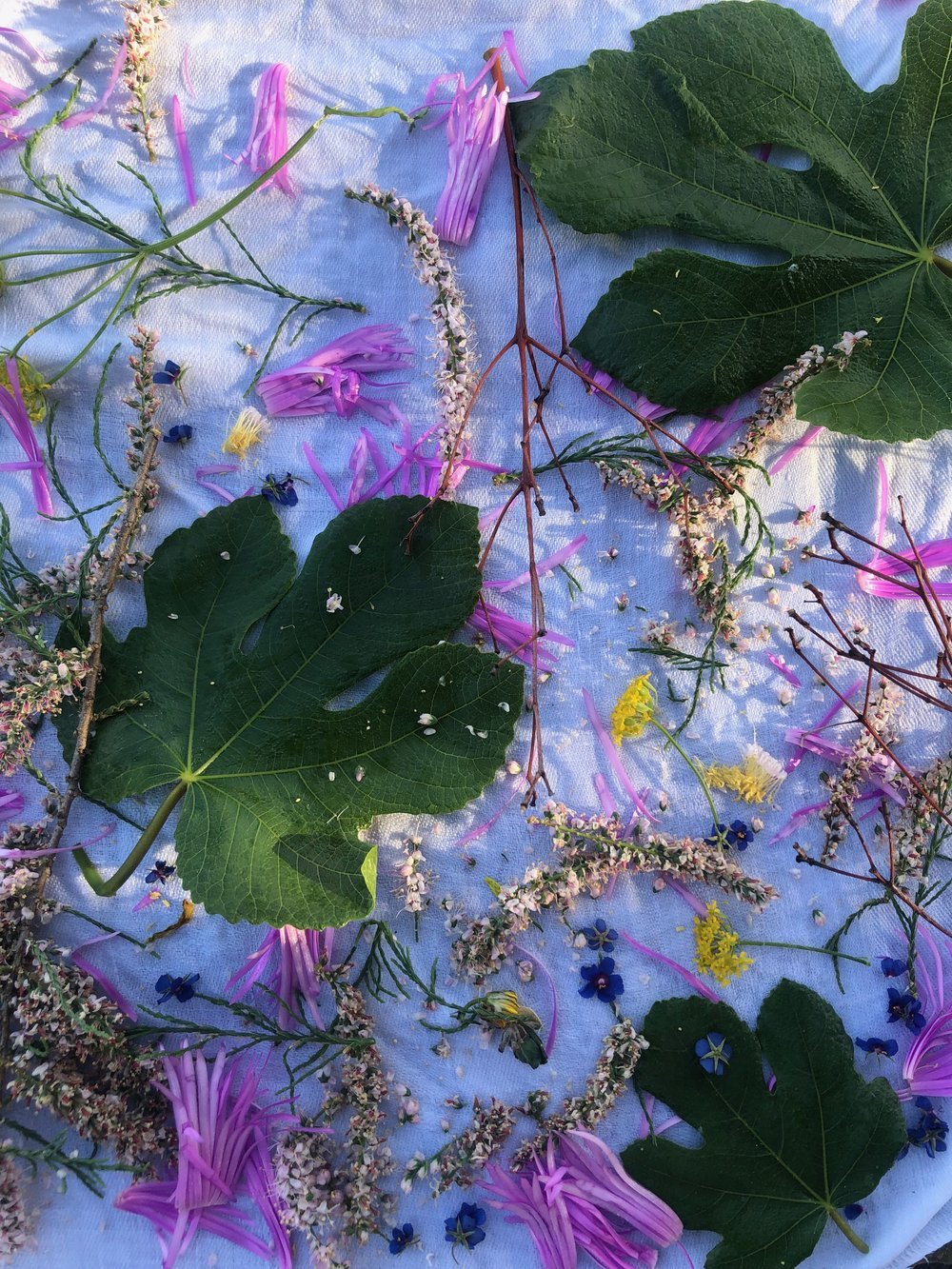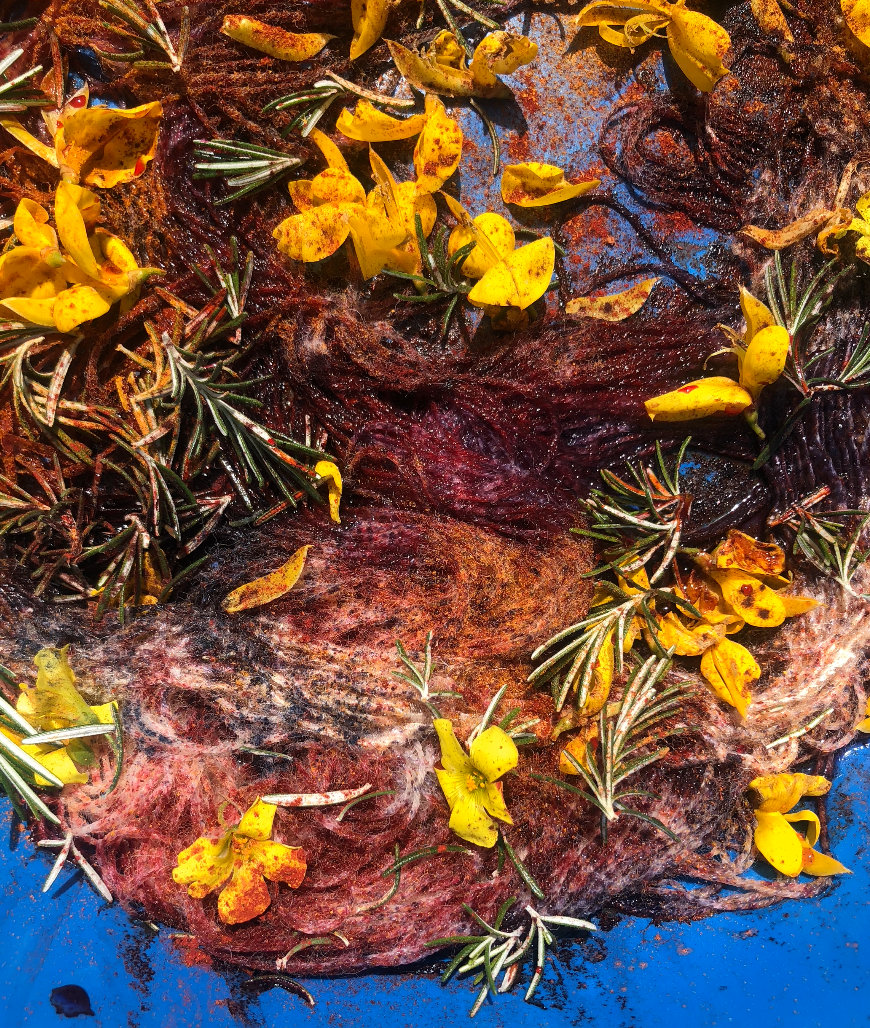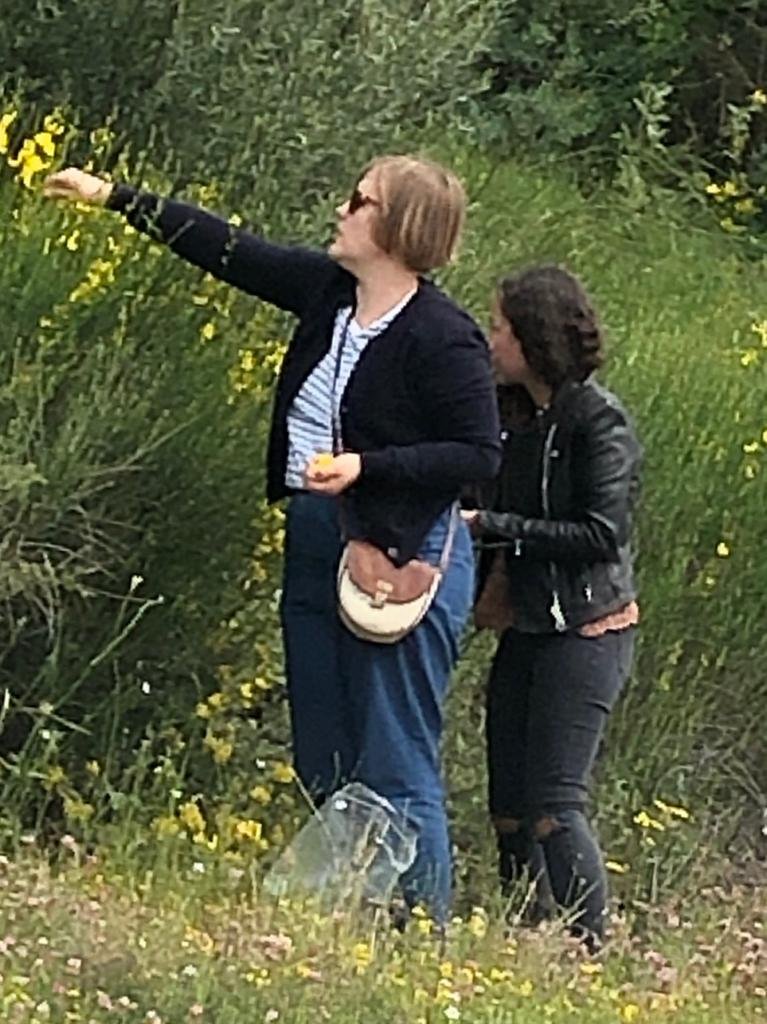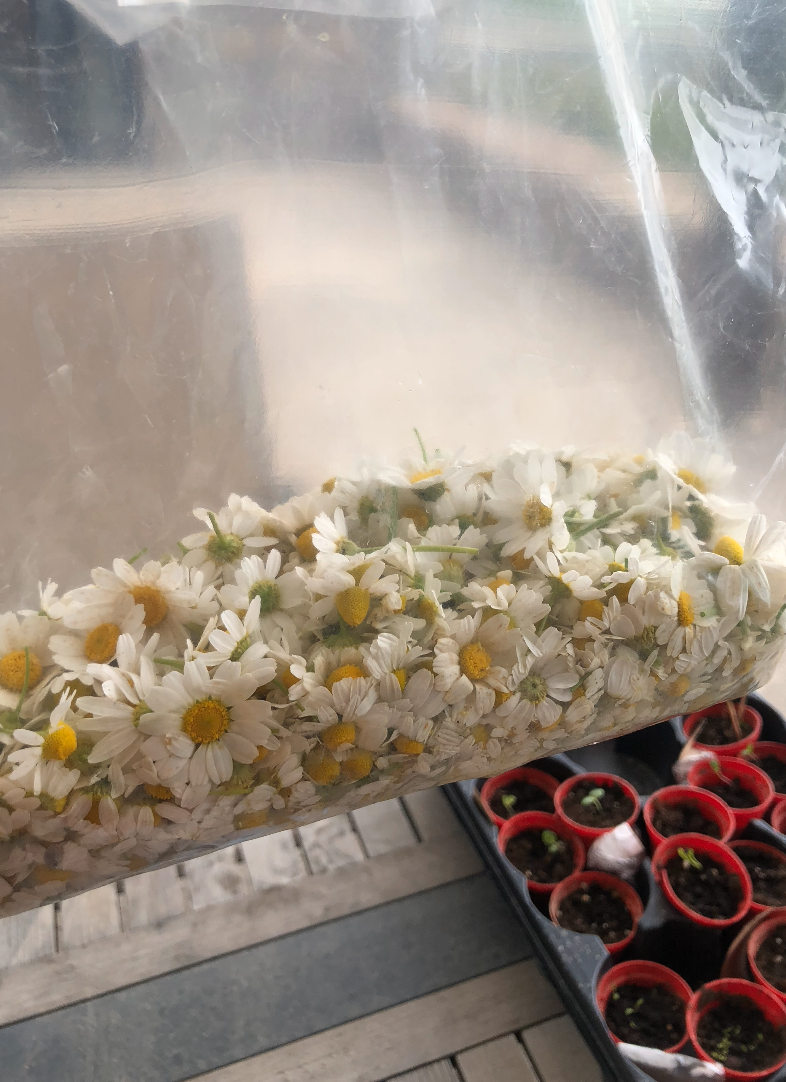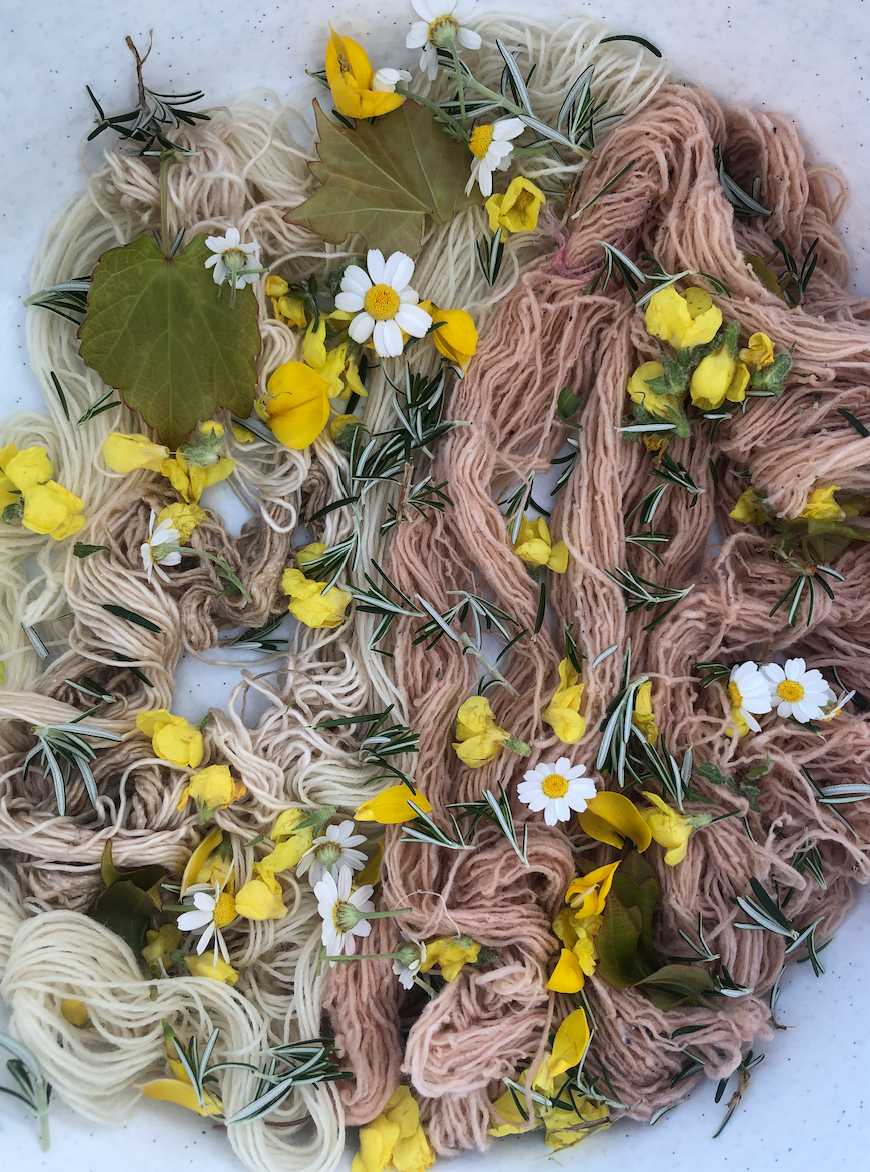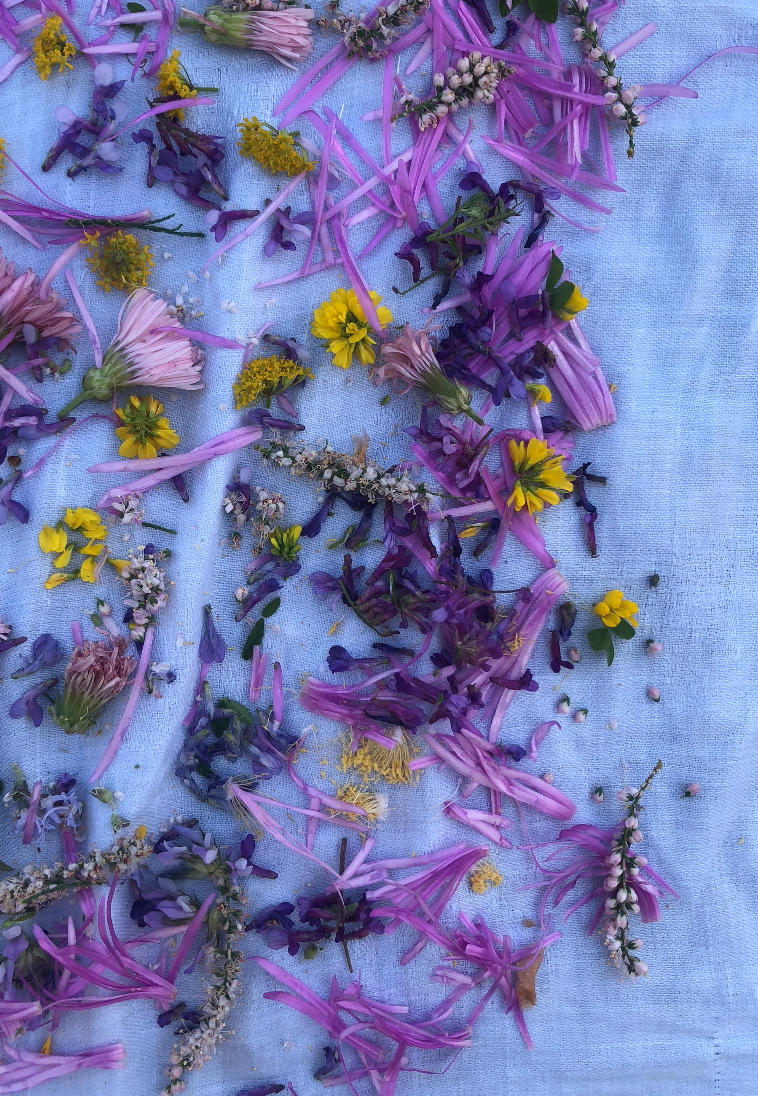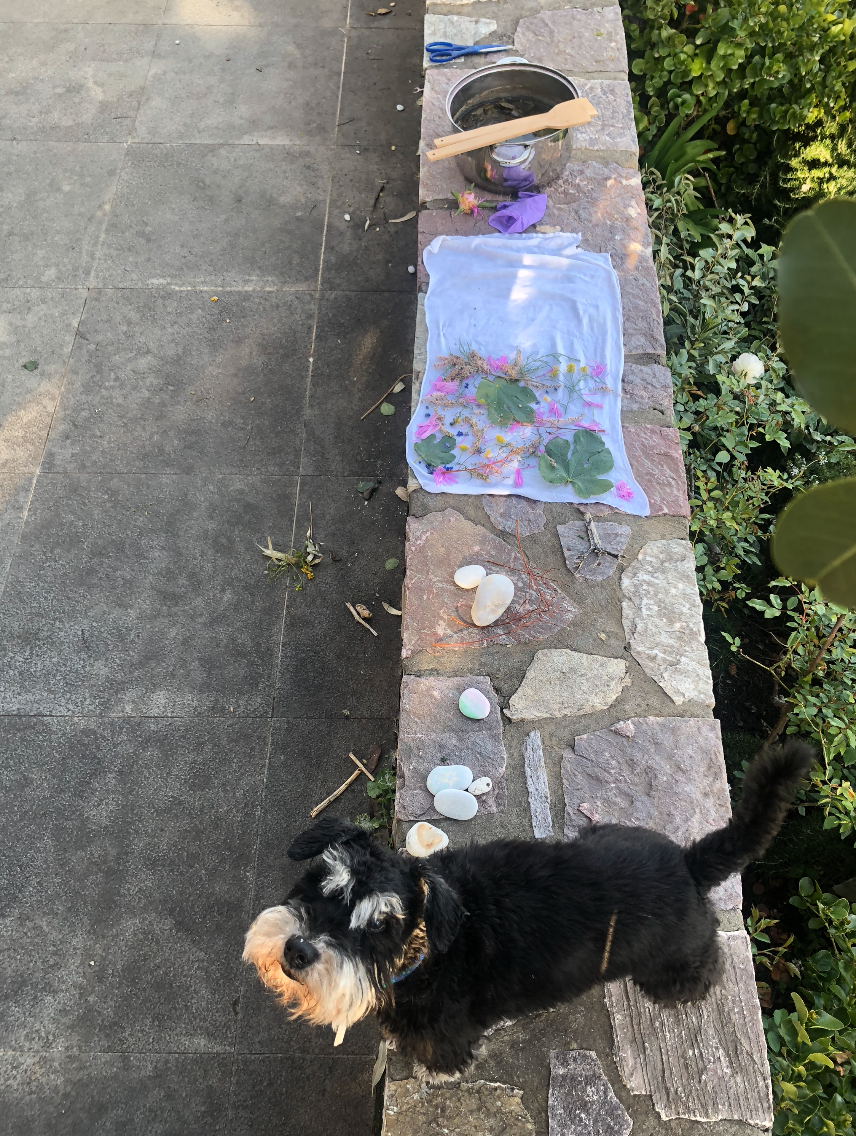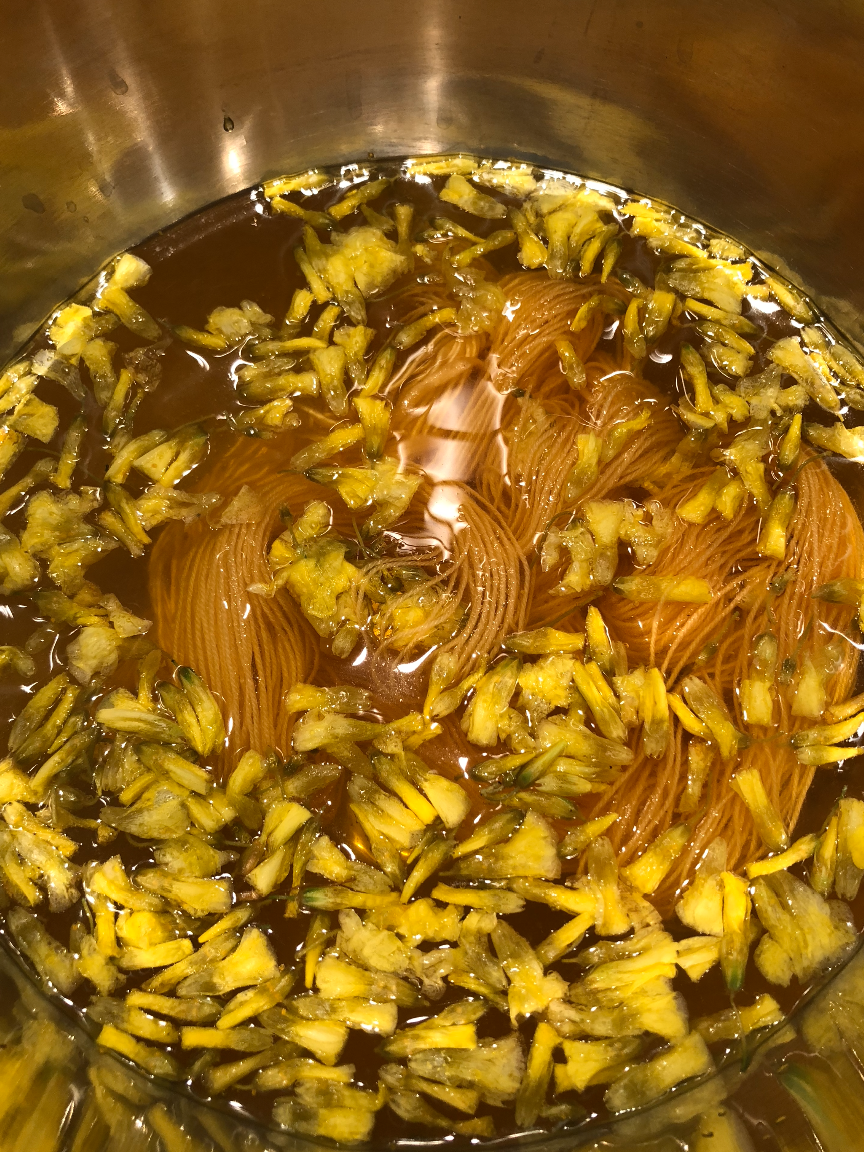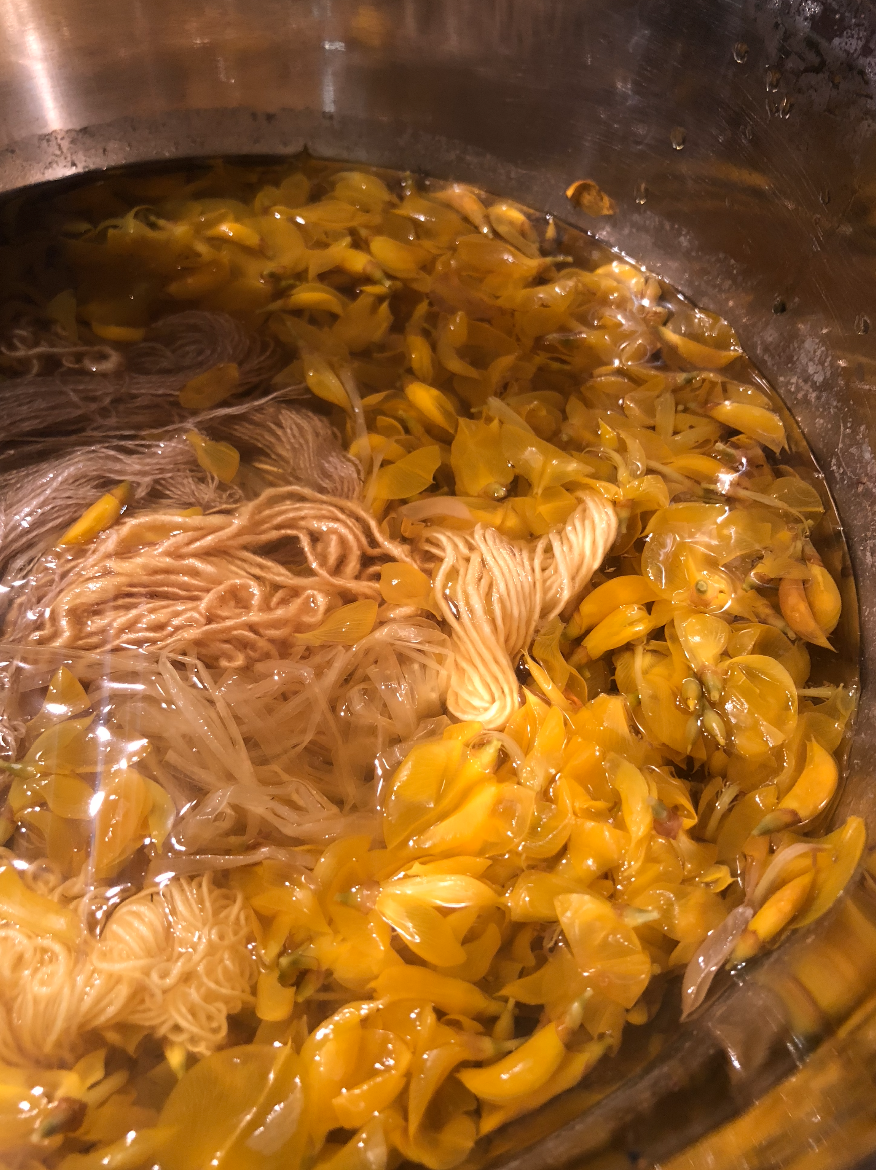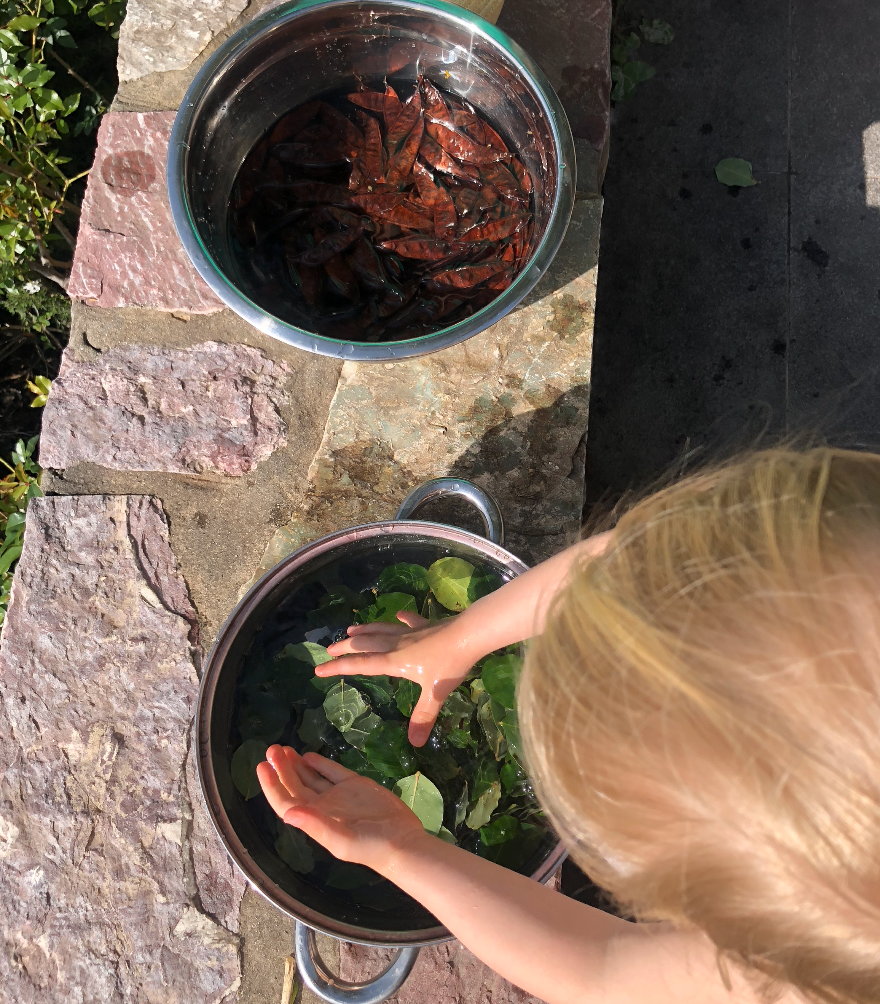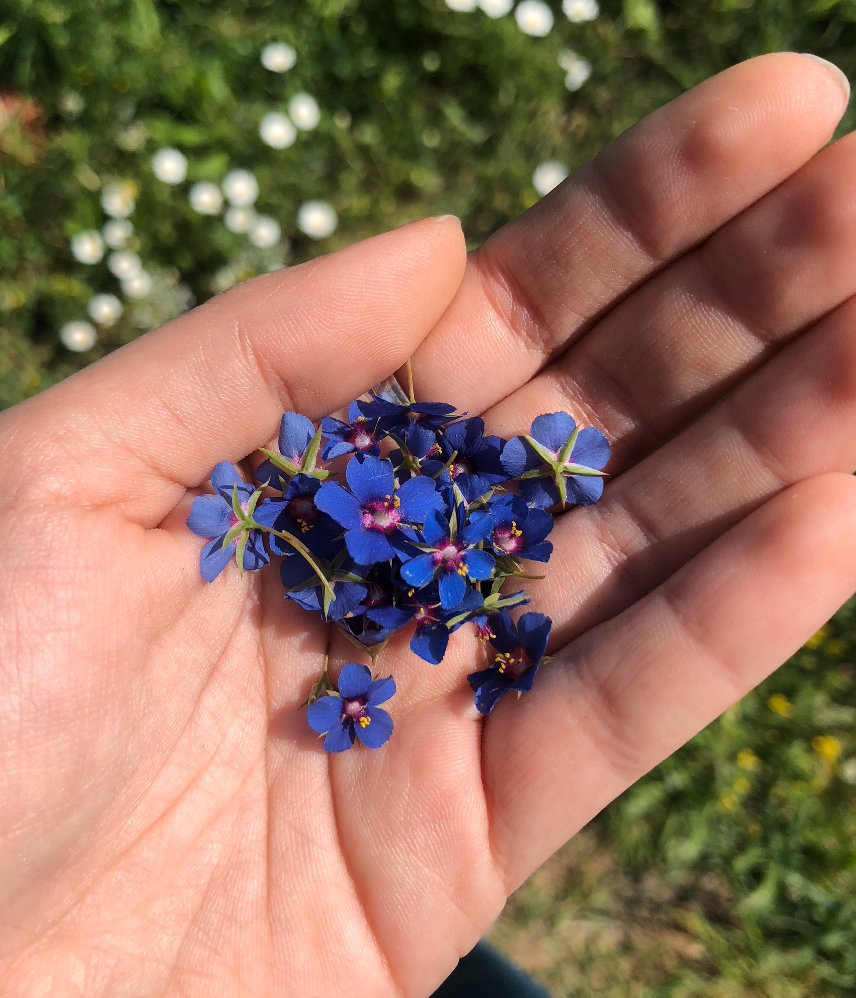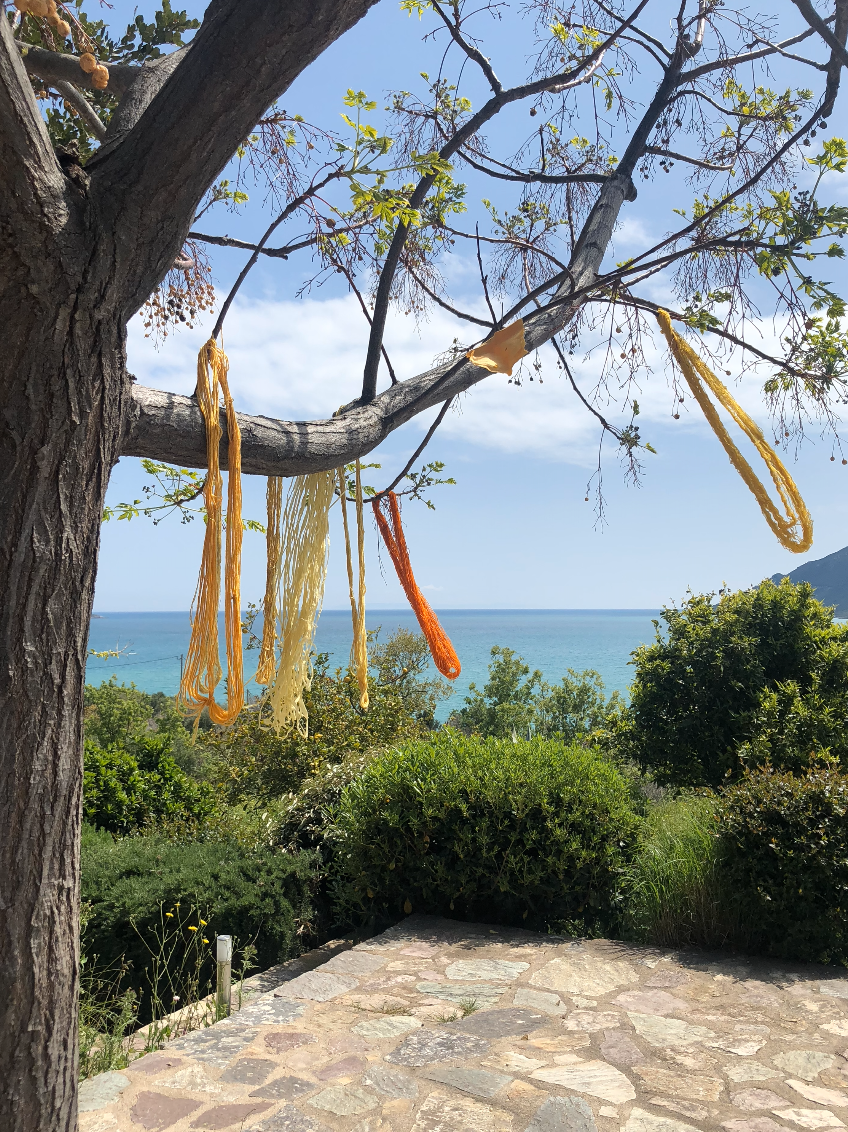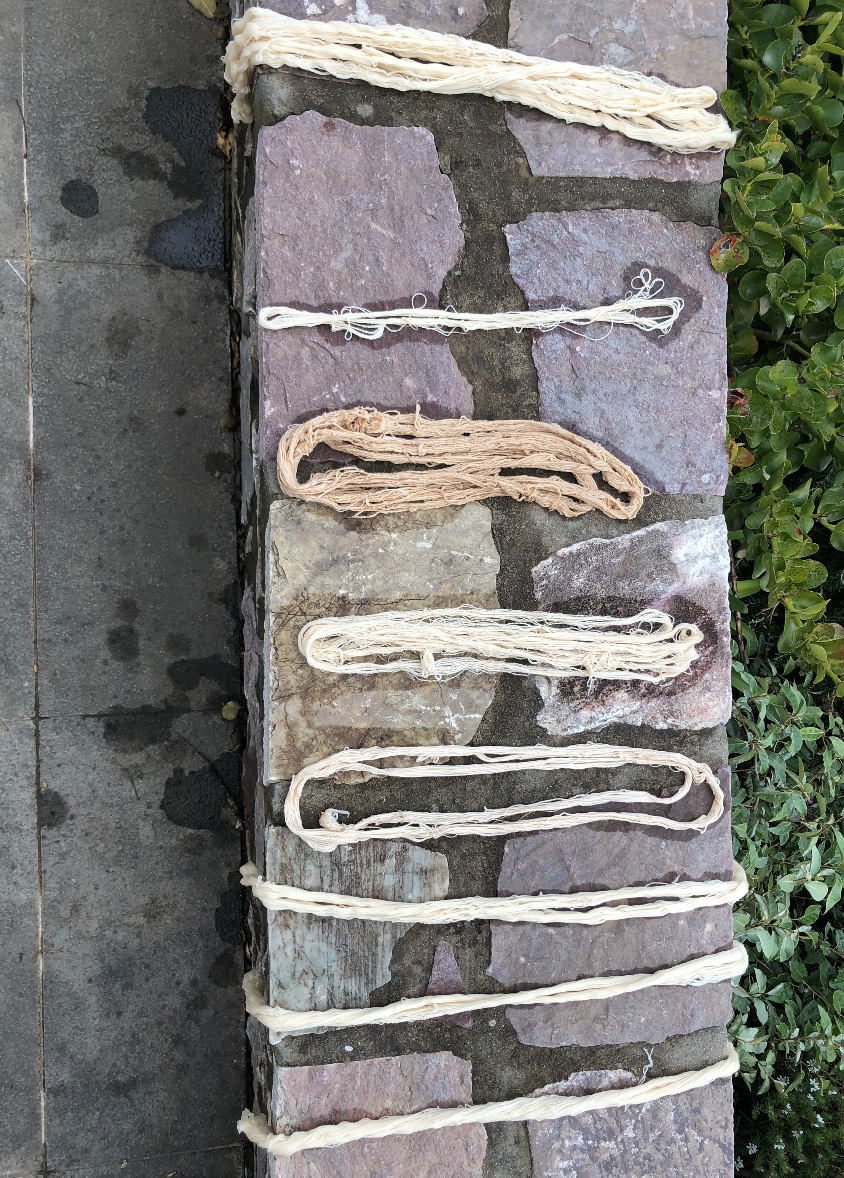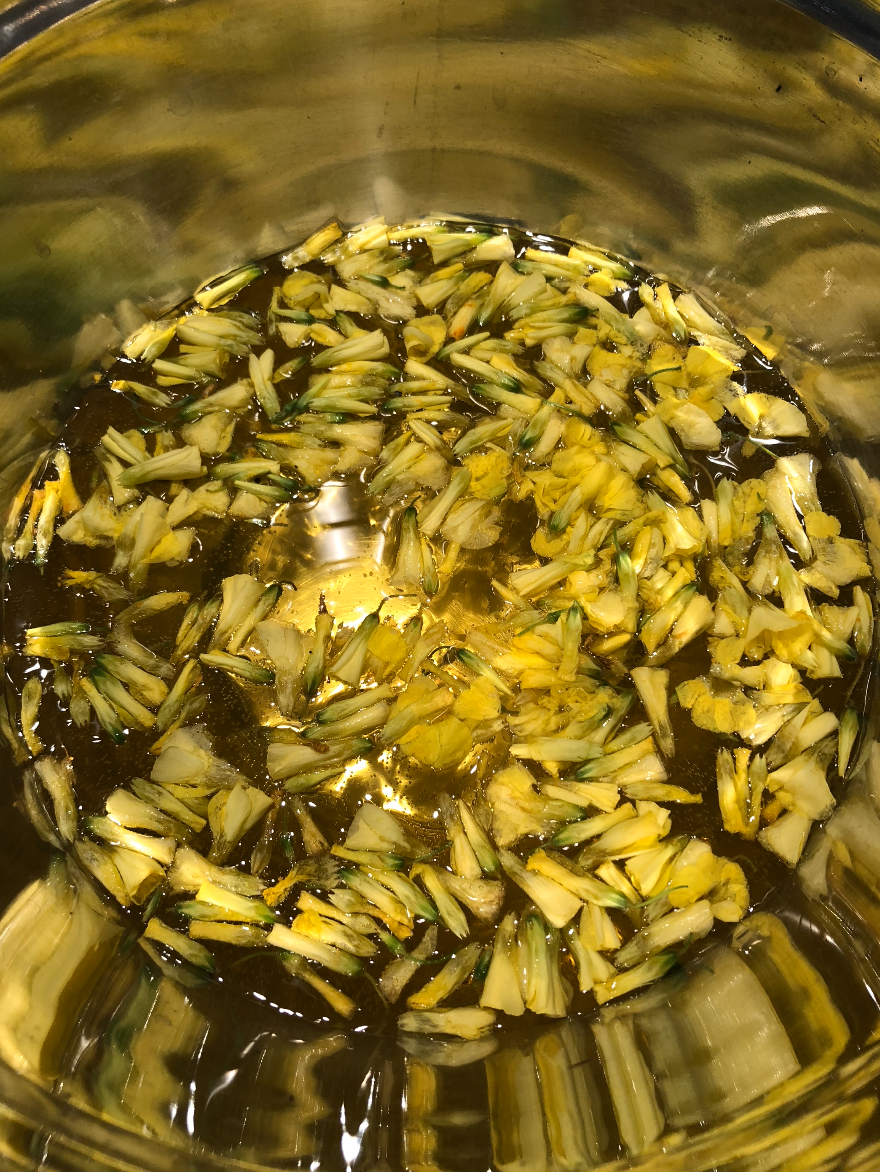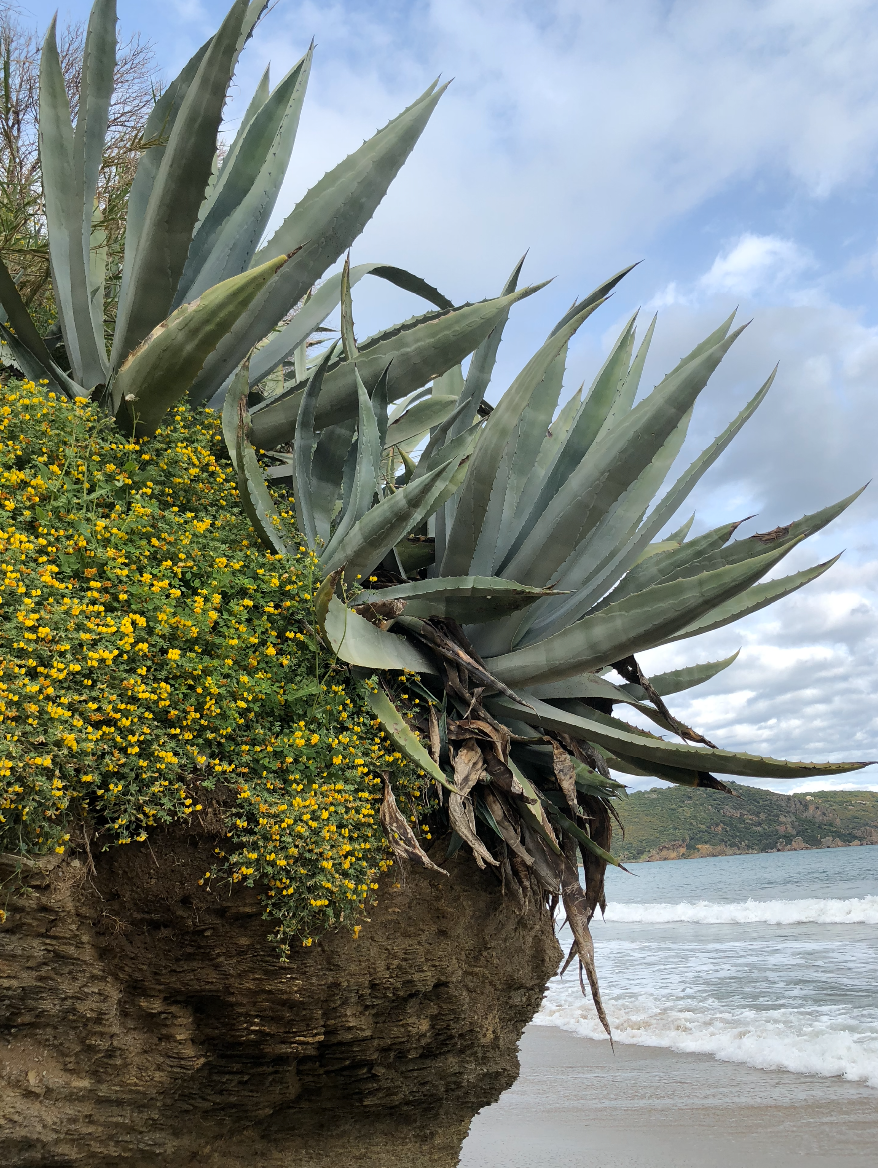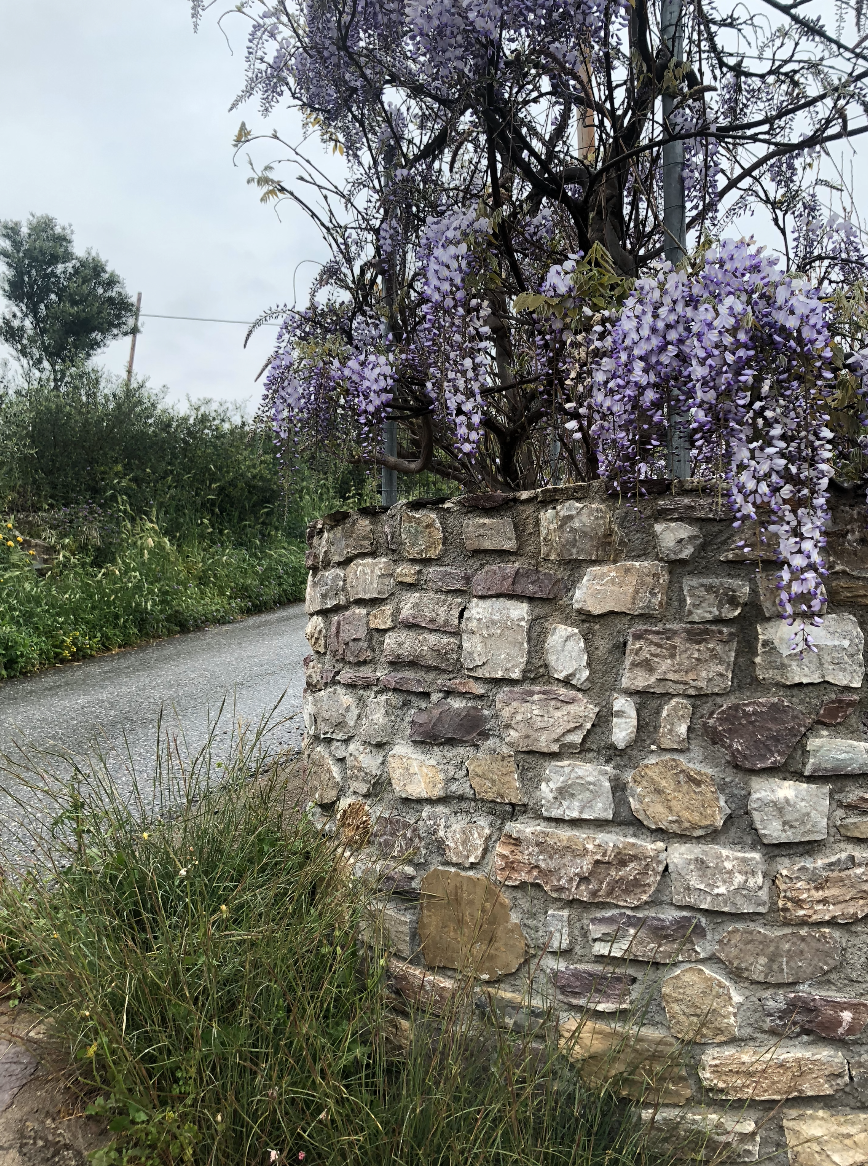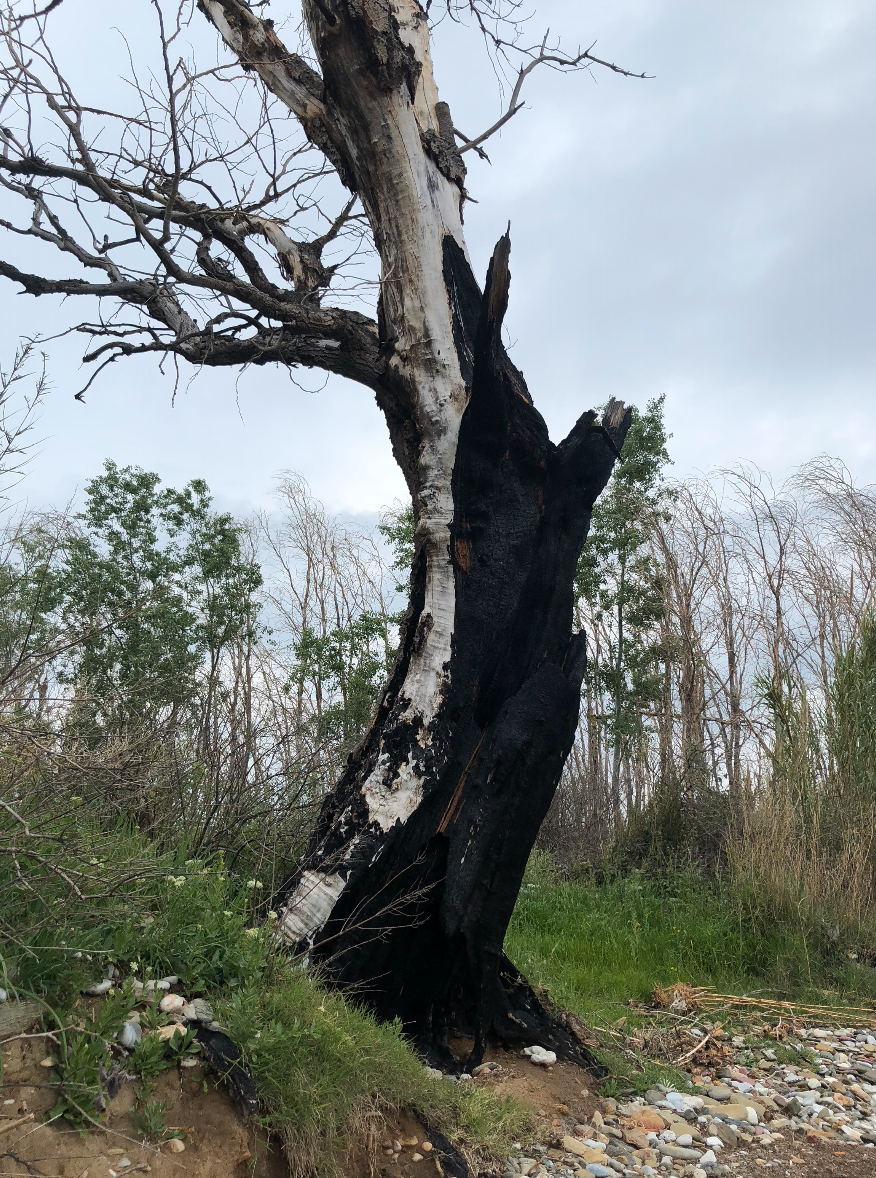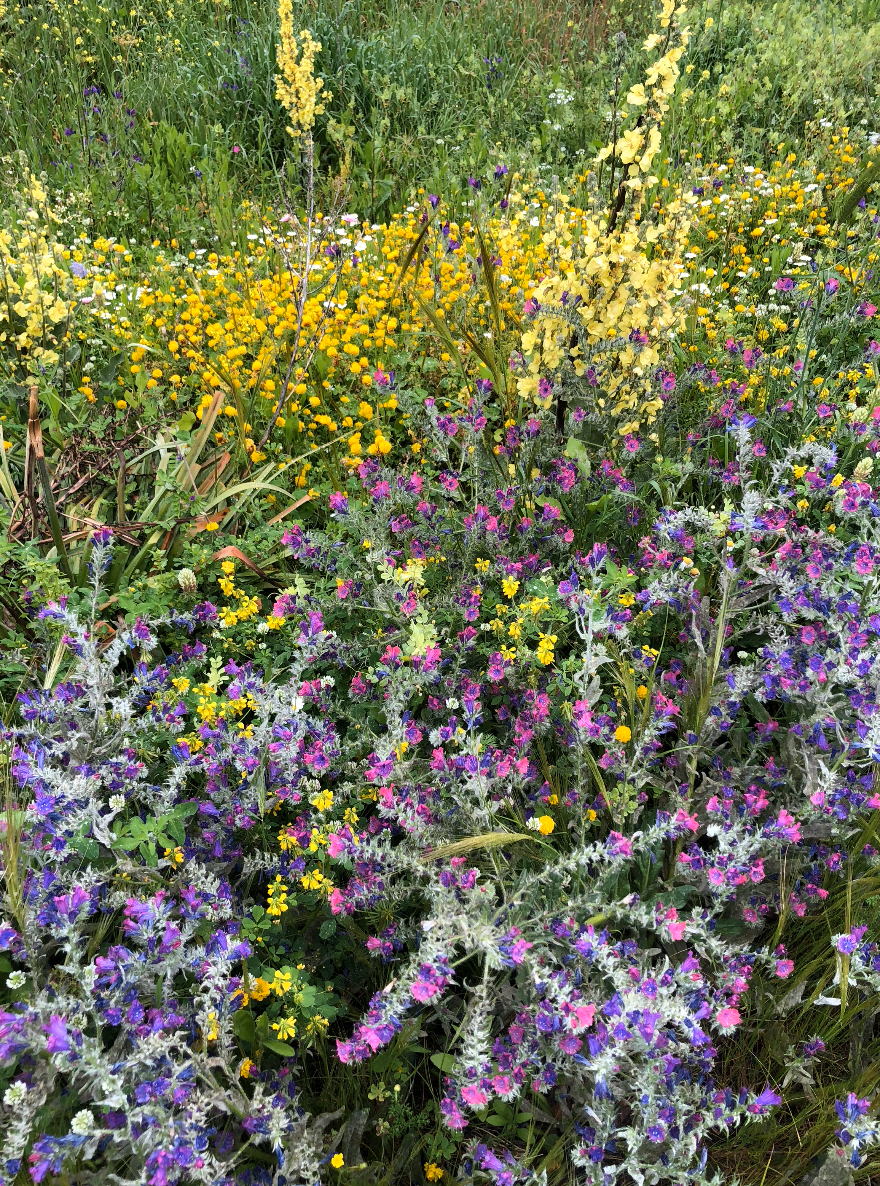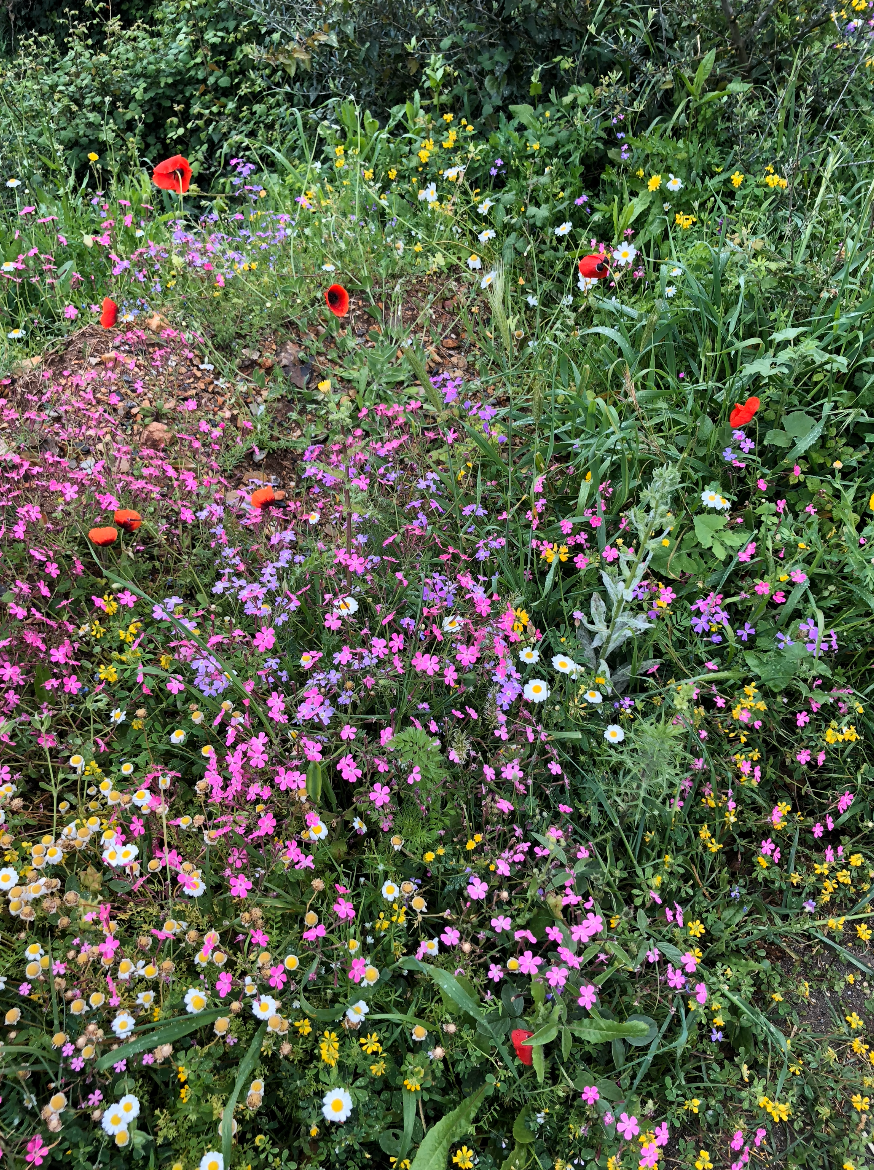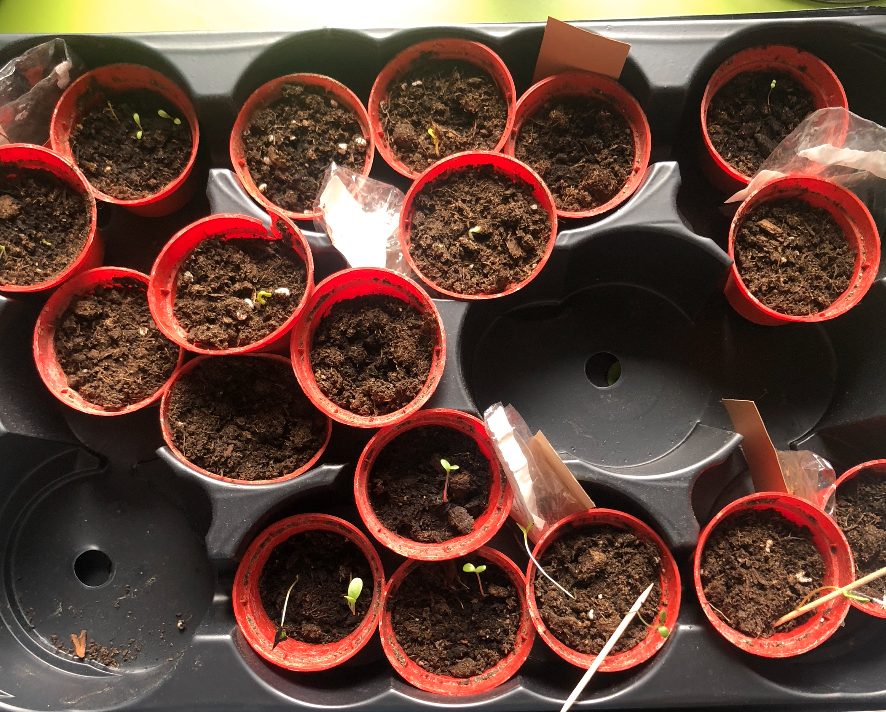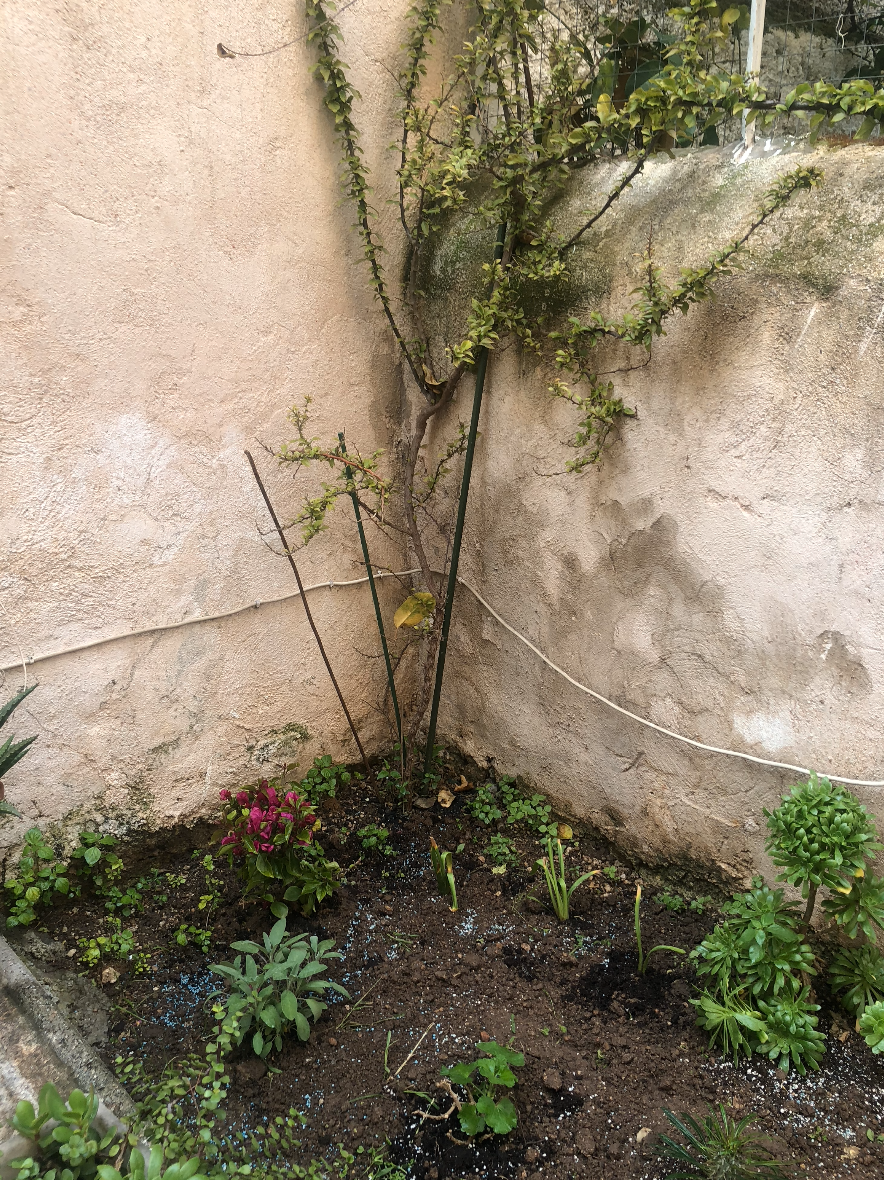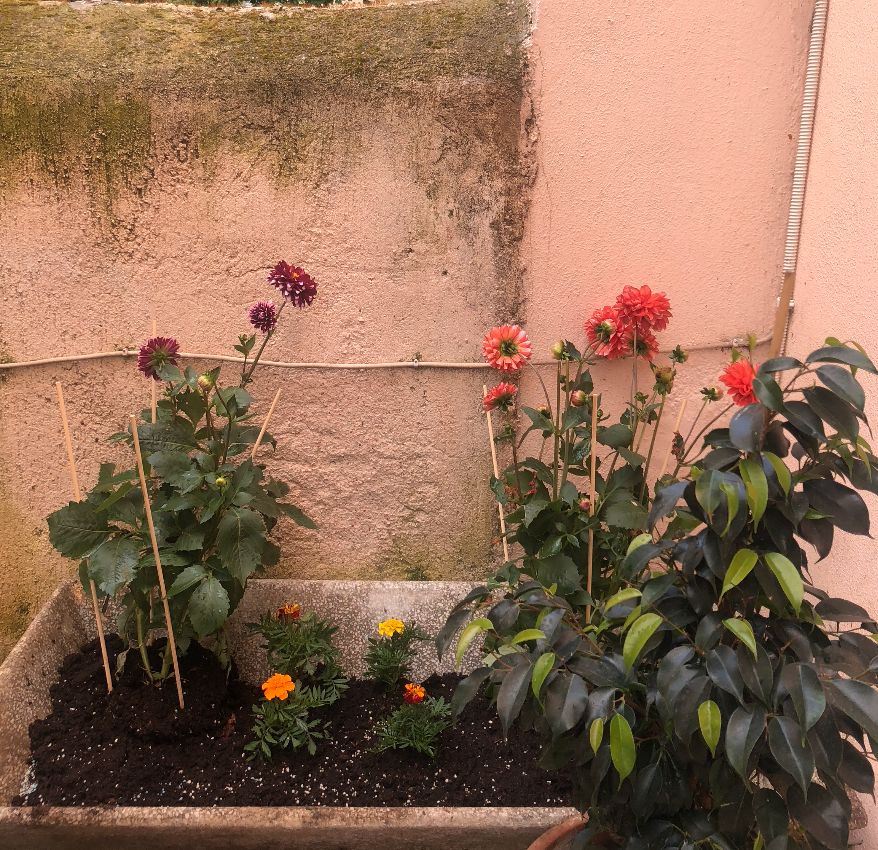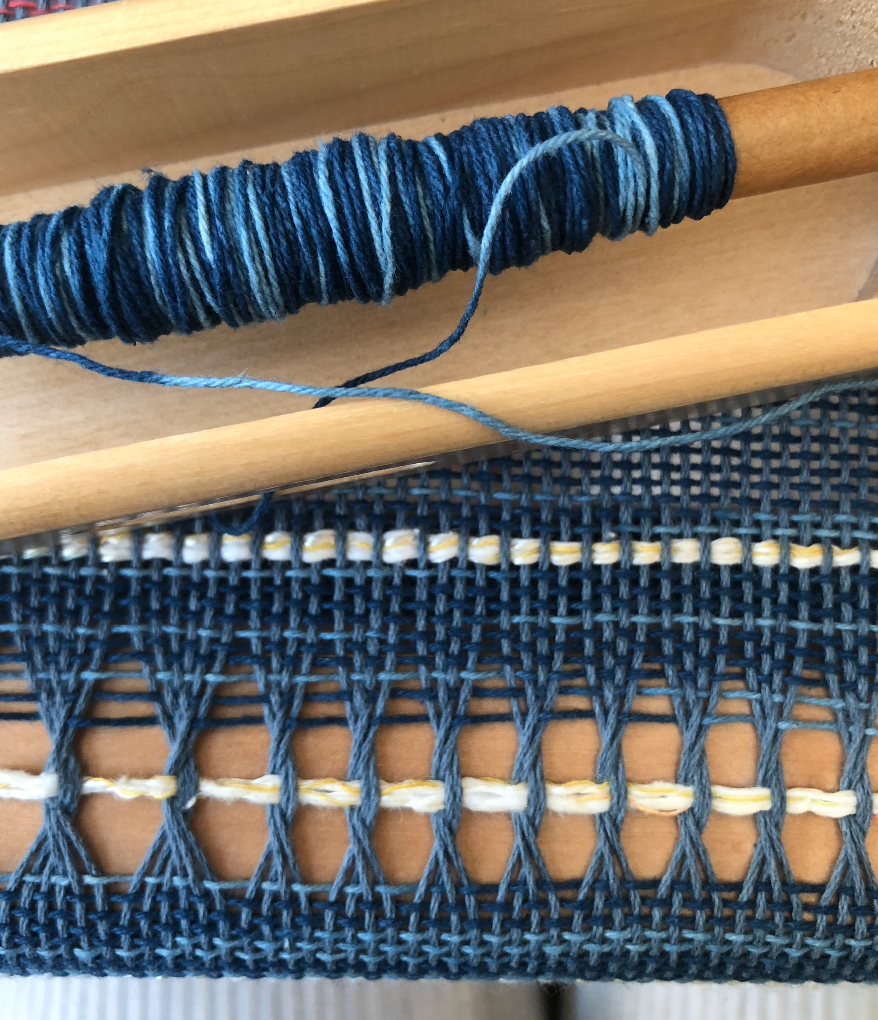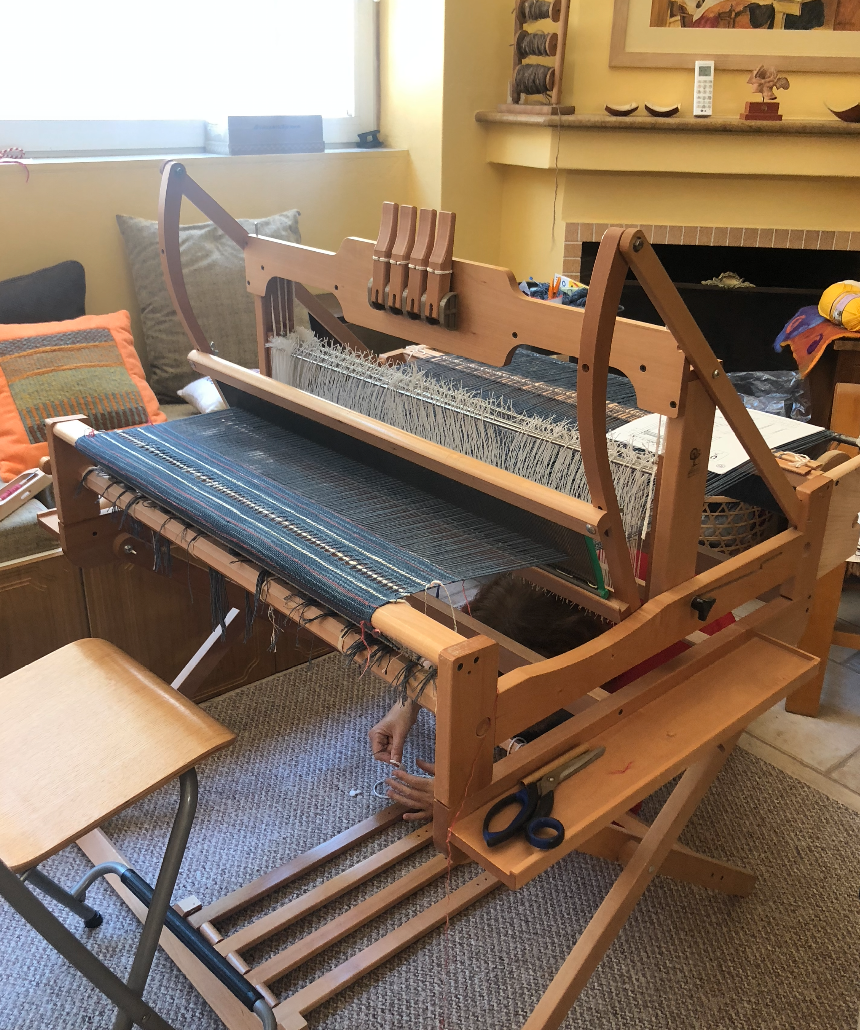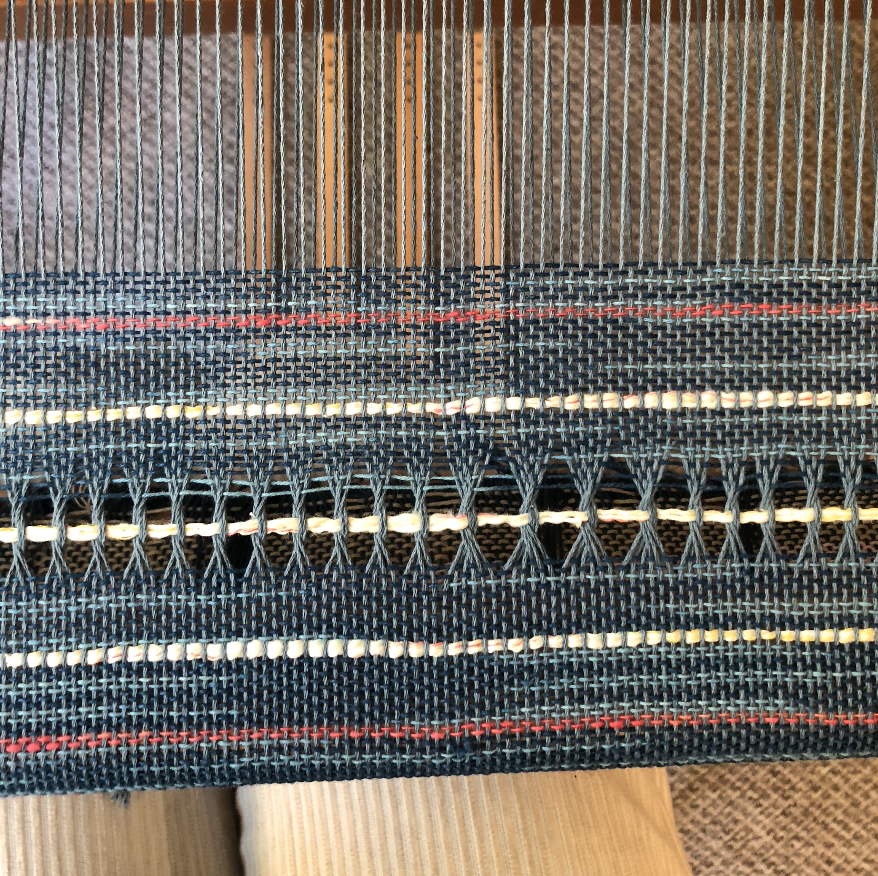Mani & Athens April 2019: Natural Dyeing with Greek Plants
Last spring, after my adventures in the US, a friend visited me with her daughter from London. She is a knitter and fellow natural dyer! Emma from @emmakylmälä on Instagram, who naturally dyes yarn and has a blog called Town Dyer. (She also holds Natural Dyeing workshops in London!)
I was really excited to see her, and to talk about natural dyeing, knitting, weaving, plants and other projects. We went to Mani, a beautiful place in the South of Greece. I was so excited to explore Greek dye plants with Emma, I hadn't had the chance to explore any since I came back from Asia and she knew a lot about dye plants, so I was sure she would help me discover them!
Firstly, she told me that the tiny yellow flower thats everywhere in Greece between March and May, can be used to dye with! I'm talking about the oxalis flowers (Οxalis Stricta), which can be found growing even on pavements in the centre of Athens. Emma told me that they produce neon yellows, and I couldn't wait for us to try them. We collected loads of it and dyed cotton, raw silk, silk, merino, superwash BFL, raffia, alpaca and linen.
We simmered the flowers for half an hour, and then Emma measured the pH which is something I rarely do. In general I like experimenting and surprises, and I am not good with keeping a log, repeating a specific colour hue or measuring everything while I dye. It was nice to see how she worked though, very methodologically, keeping notes etc. We added the pre-soaked yarn to the dye bath and we let it simmer for an hour. Then we decided to leave it to cool in the dye pot overnight. After some research, we found out that oxalis has oxalic acid which is a natural mordant. However we had already mordanted our fibres with alum. The wool and alpaca took a very strong orange colour, while both silks got slightly softer oranges. The cellulose fibres (cotton, linen, raffia) all took yellow shades.
We also dyed with Broom flowers (Genista Tinctoria). Broom is also a plant that's very common in the south of Greece. Emma had dyed with broom brunches before, but this time we dyed with the flowers. Broom is a plant I now use very often, both to dye and to eco-print with. We again simmered the flowers for half an hour before adding the pre-soaked yarn. We got lots of different yellow tones.
Next, I thought it would be a nice idea to try to dye with the pods of the Judas Tree (Cercis Siliquastrum) and the leaves of the Carob tree (Ceratonis Siliqua). Because both of these were quite hard, we left them to soak overnight before simmering them for another hour and then leaving the yarn in to cool.
The pods produced light brown / beige shades with a hint of pink. My mum suggested we dye with the carob tree leaves because she had observed that the concrete around the tree had changed to a darker colour. She thought that for the concrete to change colour the leaves must have a natural dyeing pigment. The dye was green, and on the silks and wool it produced really nice and strong yellows, whereas unfortunately on cotton and linen there was almost no change from the original colour of the yarn.
While in Mani, we went for a lot of walks. We picked a lot of flowers that we used to bundle dye both yarn and fabric.
Emma also showed me some other plants that can be used to dye with such as wild fennel, mullein and wild heather flowers. Unfortunately we didn't have time to dye with them then, but I've been experimenting with Greek plants the last few months.
Some other plants I've been experimenting with are: almond tree leaves, acorns, walnut leaves, pomegranate skins, olive leaves, mountain tea, cedar wood and oak bark.
Ever since I started using natural dyes, I loved local dye plants the most. First in London, then in South East Asia and now in Greece. There’s something very special about putting something you collected in the wild into a dye pot. Even though I still work with bought dyestuff too, collecting plants remains one of my favourite activities. Using fresh local plants adds more thrill to the dyeing practice. You can never be sure what the outcome will be. The type of soil, the sun exposure, the quality of the water - all these things can change the final hue of the colour. In April, I also moved into my new flat in Athens. It has a small garden, and I decided to make a small natural dyeing garden by planting plants I can use for natural dyeing. Natural dyeing is a huge patience exercise and growing a dye garden takes it one step further. Some of the plants I decided to plant will need 3 years to be able to be used to produce colour… Let’s see how my gardening adventures will go!
I also continued my weaving classes, focusing on lace weaves (in Greek known as Azour). It is not possible to weave true lace on a loom, but lacy structures can be made, either using a very open weave and / or creating spaces within the cloth. You can do this either by hand manipulation or by loom-control. Leno, wrappings, brooks bouquet, danish medallions are my favourite hand manipulating lace weaves. I didn’t really explore loom controlled lace weaves but I am planning on trying them out soon!
